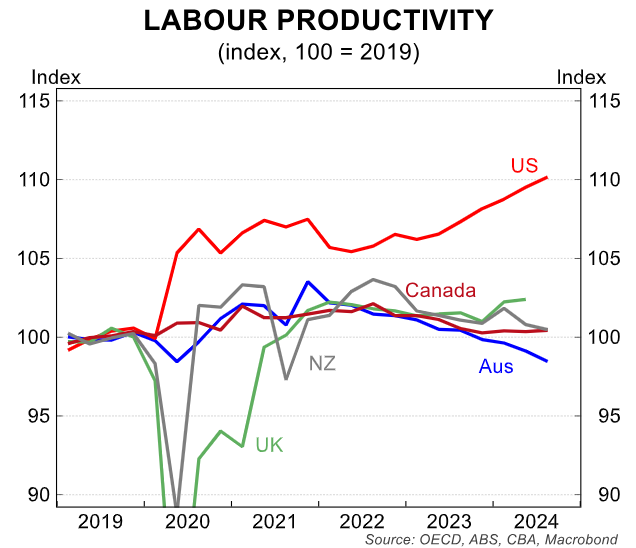Tuesday’s federal budget revealed that the cost of the National Disability Insurance Scheme (NDIS) will reach $50.8 billion next financial year, surpassing the $51 billion allocated to the defence budget.
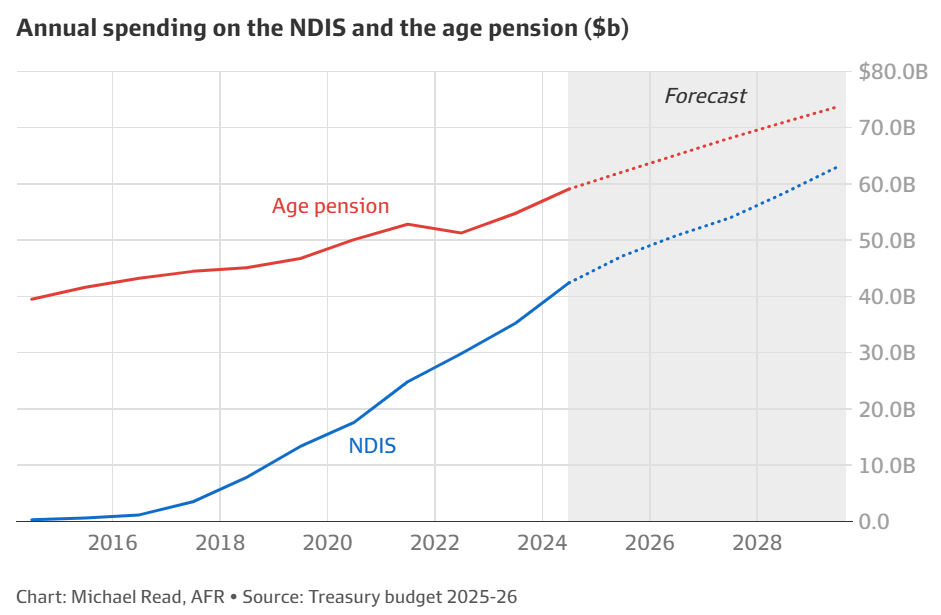
While the NDIS has created a significant financial burden on the federal budget, it is mainly responsible for driving Australia’s job growth and maintaining the unemployment rate at historically low levels.
The following charts, courtesy of Justin Fabo from Antipodean Macro, tell the story.
The number of Australians working as aged and disability carers has soared, driven by the NDIS.
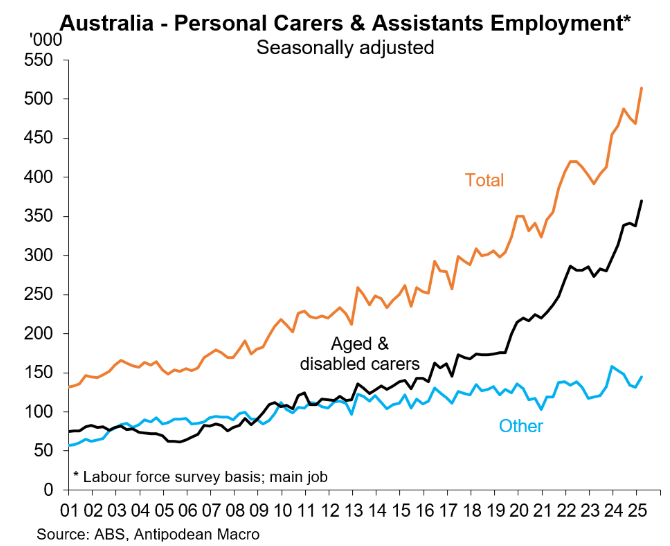
As a result, over the two years to February 2025, the healthcare and social assistance industry has experienced the most significant job growth.
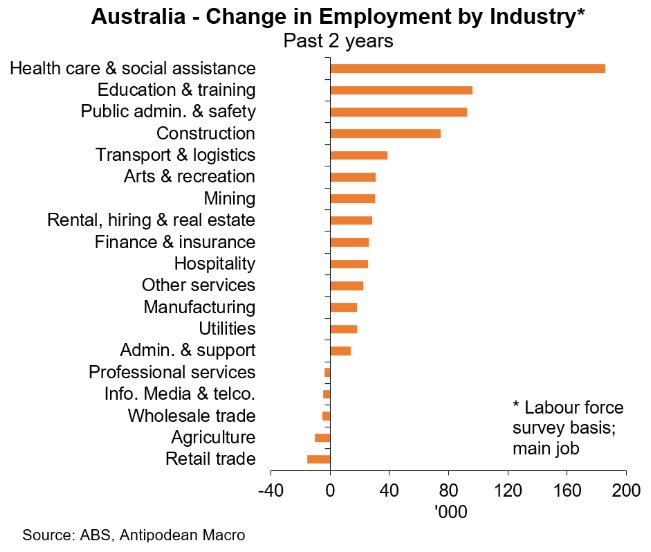
The three non-market industries—healthcare, education, and public administration—accounted for 57% of total employment growth in Australia over the two years to February 2025.
Fabo shows that these three non-market industries now account for more than 30% of total employment in main jobs.
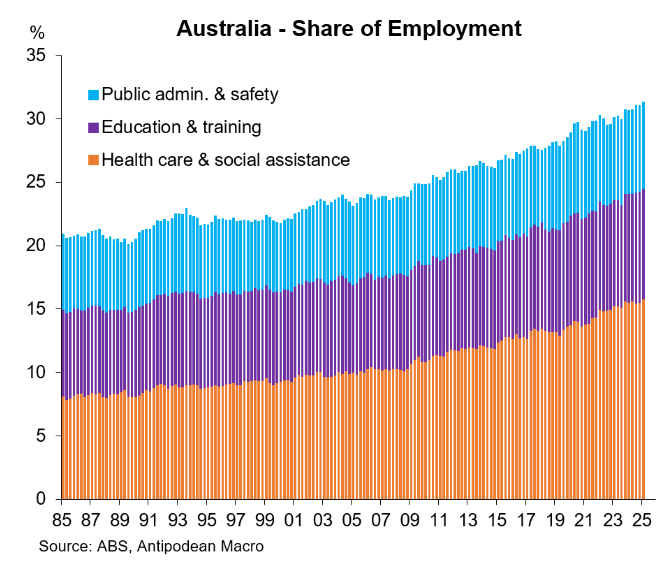
The NDIS is projected to grow by 8.1% annually over the next decade, significantly outpacing the growth rate of other social programs.
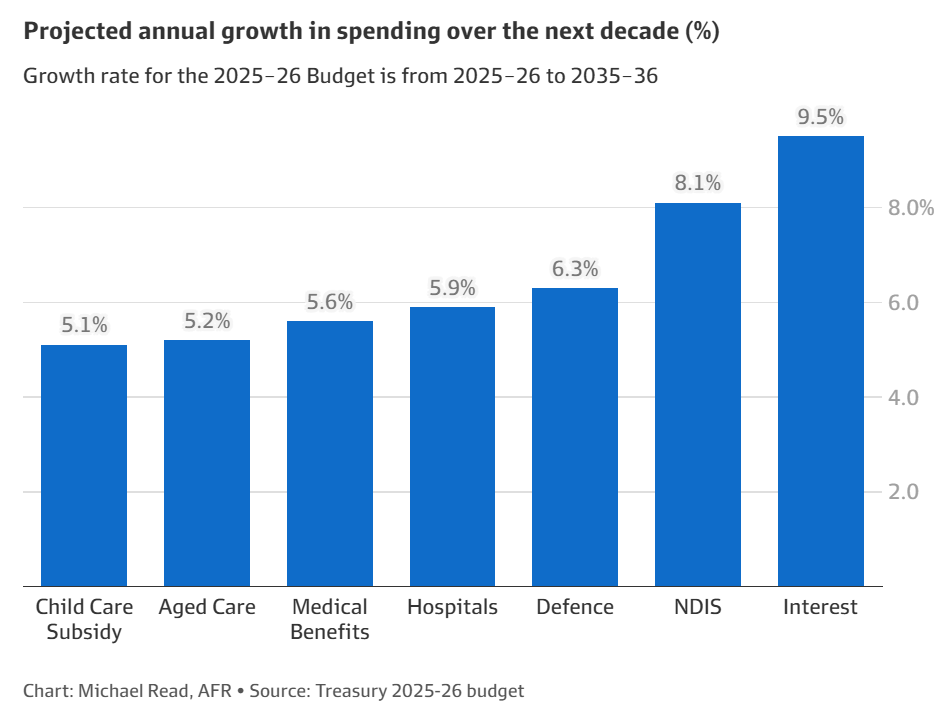
As a result, it will continue to be a key driver of Australia’s job growth.
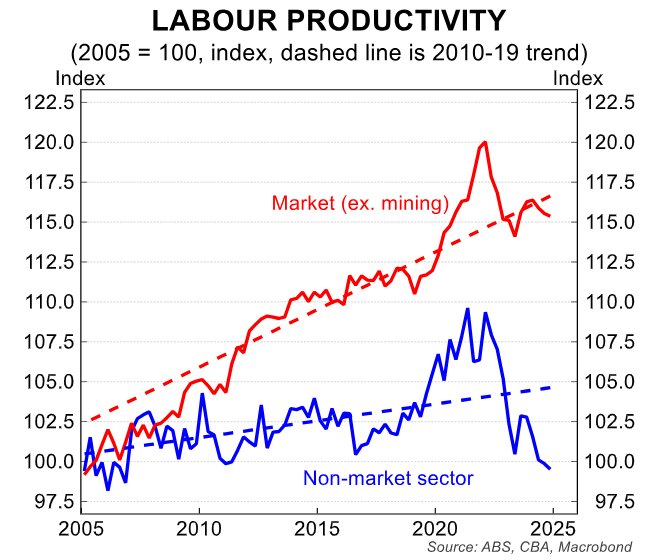
It will also remain a significant drain on Australia’s labour productivity, which lags behind that of peer economies.
